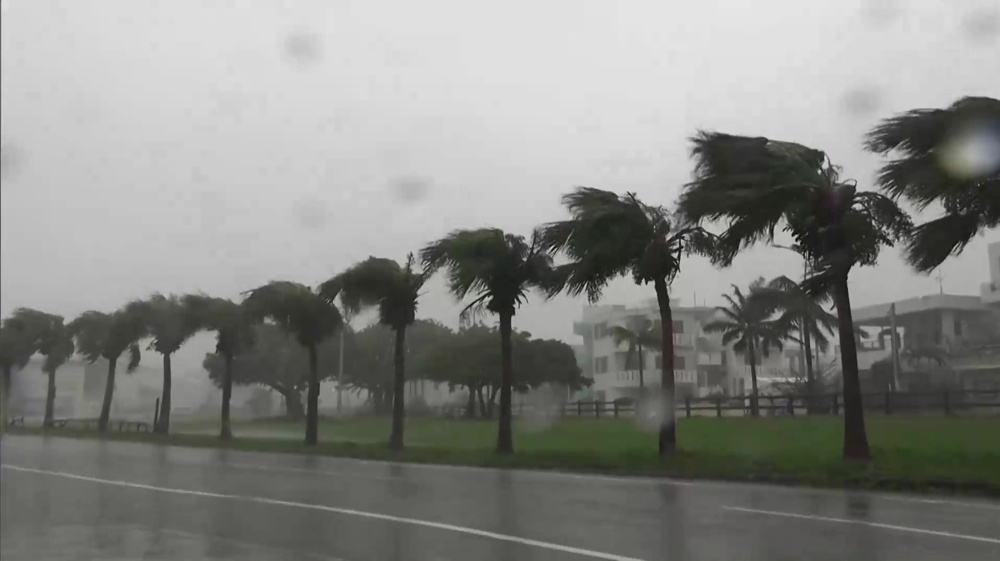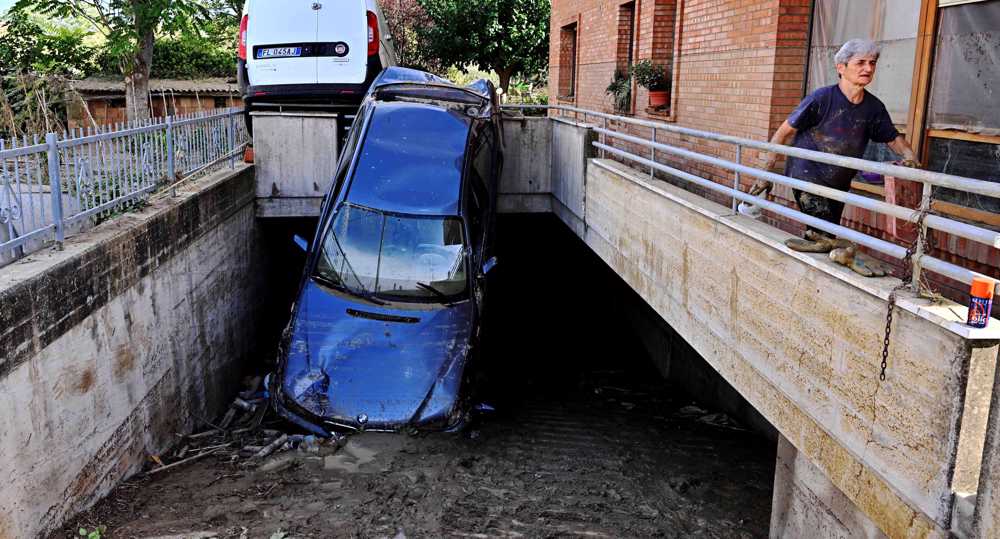Nearly 3 million urged to evacuate as Typhoon Nanmadol lashes Japan
Nearly three million people in southwestern Japan have been ordered to evacuate ahead of a powerful typhoon named Nanmadol, forecast to hit the region on Sunday.
The Japan Meteorological Agency (JMA) issued a rare "special warning" for the Kagoshima region in southern Kyushu prefecture, an alert that is issued only when it forecasts conditions seen once in several decades.
On Saturday evening, Typhoon Nanmadol was classed at the agency’s top category of “violent”, and was carrying gusts of up to 270km/h (168mph) as it hovered about 200km (124 miles) north-northeast of Minami Daito island, 400km (250 miles) east of Okinawa island, the weather agency said.
The eye of Typhoon Nanmadol is clearly visible in satellite images. The typhoon has developed rapidly since Friday night and it is slowly moving north-north-west. It is expected to move close to Kyushu or could make landfall through Monday.
“There are risks of unprecedented storms, high waves, storm surges, and record rainfall,” Ryuta Kurora, the head of the JMA unit, told reporters. “Maximum caution is required,” he said, urging residents to evacuate early.
“It’s a very dangerous typhoon. The wind will be so fierce that some houses might collapse,” Kurora added, also warning of flooding and landslides.
By Sunday morning, 2.9 million residents in Kyushu received evacuation warnings, according to the government's Fire and Disaster Management Agency, and Kagoshima officials said over 8,500 people were already in local shelters.
So far no reports of injuries or structural damage have been reported but conditions were deteriorating, a Kagoshima prefectural official told AFP news agency.
The evacuation warnings are not mandatory, and during past extreme weather events authorities have struggled to convince residents to take shelter quickly enough.
By Sunday morning, 25,680 households in Kagoshima and neighboring Miyazaki were already without power, while regional train services, flights and ferry runs were cancelled until the passage of the storm, local utilities and transport services said.
Japan Airlines and all Nippon Airways have already canceled at least 510 flights that were scheduled to depart from or arrive at airports in Japan on Sunday, according to NHK.
Japan is in typhoon season and is hit by around 20 such storms a year, routinely seeing heavy rains that cause landslides or flash floods.
In 2019, Typhoon Hagibis smashed into Japan as it hosted the Rugby World Cup, claiming the lives of more than 100 people. Recent studies show that human-caused climate change was the main reason for the extreme rainfall happening.
Scientists say climate breakdown is increasing the severity of storms and causing extreme weather such as heatwaves, droughts and flash floods to become more frequent and intense.
IRGC chief urges Muslim countries to cut aid routes to Israel
'New chapter in cooperation': Iran, Venezuela sing new MoUs
Jordan sentences former lawmaker for supporting Palestinian resistance
Basij volunteer forces hold massive drills in southwestern Iran
Israeli war criminals 'not welcome', US city says after ICC ruling
US vetoing of Gaza ceasefire resolution ‘disgraceful’: Iran’s UN envoy
VIDEO | IAEA adopts anti-Iran resolution tabled by E3
VIDEO | Iran's president urges Pope to help end Israel's onslaught in Gaza














 This makes it easy to access the Press TV website
This makes it easy to access the Press TV website